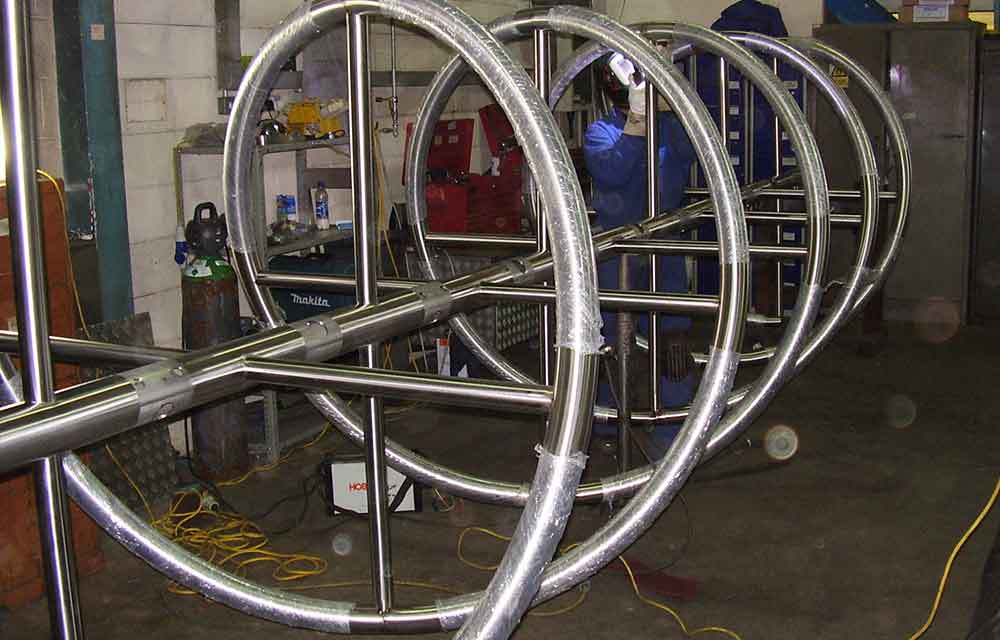When we think about the construction of modern stadiums, one key element that stands out is the use of architectural metal. This versatile material has become a cornerstone in stadium design, enhancing both aesthetics and functionality. In this article, we’ll delve into the significance of architectural metal for stadiums, exploring its benefits, applications, and future trends.

The Rise of Architectural Metal in Stadium Design
The use of architectural metal in stadium construction has gained immense popularity over the years. From iconic sports venues to concert arenas, this material has transformed the way we perceive and experience these structures. But what makes it so essential?
Durability and Strength
One of the primary reasons why architectural metal is favored in stadium construction is its durability and strength. Unlike traditional materials, metals like steel and aluminum offer unparalleled structural integrity, making them ideal for large-scale constructions.
Aesthetic Appeal
Beyond its strength, architectural metal brings a modern and sleek aesthetic to stadiums. The ability to mold and shape metal into intricate designs allows architects to create visually stunning structures that captivate audiences.
Applications of Architectural Metal in Stadiums
Roofing Solutions
One of the most notable applications of architectural metal in stadiums is in roofing. Metal roofs are not only durable but also lightweight, reducing the overall weight on the structure while providing excellent weather resistance.
Facade Design
Metal facades are another popular use of architectural metal in stadiums. These facades can be customized with various finishes and coatings, offering both protection and an attractive appearance. For more on facade designs using metal, visit Metal Patina.
Seating Structures
The seating arrangements in stadiums are often made using metal frameworks. This ensures safety and longevity, accommodating thousands of spectators during events.
Innovations in Architectural Metal
Metal Fabrication Techniques
Advancements in metal fabrication have revolutionized how stadiums are constructed. Techniques such as Metal Etching allow for intricate designs and patterns, enhancing the overall aesthetic.
Sustainable Practices
Incorporating sustainable practices in the use of architectural metal is becoming increasingly important. Recycled metals and energy-efficient manufacturing processes are paving the way for greener stadium construction.
Challenges and Solutions
Corrosion Resistance
While architectural metal offers many benefits, corrosion can be a concern. However, modern coatings and treatments have significantly improved the corrosion resistance of metals used in stadiums.
Cost Considerations
The initial cost of using architectural metal can be high. However, its longevity and low maintenance requirements often justify the investment. For tips on maintaining metal finishes, explore Metal Finishes.
Future Trends in Stadium Metal Design
Smart Stadiums
The integration of technology in stadium design is on the rise. Metals with embedded sensors can provide real-time data on structural health, enhancing safety and maintenance.
Adaptive Architecture
Future stadiums are likely to feature adaptive architecture, with moving parts and dynamic designs made possible through the use of architectural metal.
Conclusion
In conclusion, architectural metal for stadiums is a game-changer in modern construction. Its durability, aesthetic appeal, and adaptability make it an invaluable material in the design and construction of stadiums worldwide. As we look to the future, the role of architectural metal will continue to evolve, shaping the stadiums of tomorrow.

FAQs
Why is architectural metal preferred for stadium roofs?
Architectural metal is preferred for stadium roofs due to its lightweight nature, durability, and excellent weather resistance.
How does architectural metal contribute to sustainability?
Architectural metal contributes to sustainability through the use of recycled materials and energy-efficient manufacturing processes.
What are the challenges of using architectural metal in stadiums?
Challenges include corrosion and initial costs, but these are mitigated through modern treatments and the long-term benefits of metal use.
For more detailed insights on architectural metal, visit Architectural Metal and All Metals Fab.
This article contains affiliate links. We may earn a commission at no extra cost to you.

